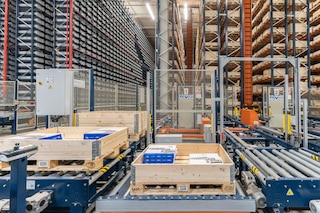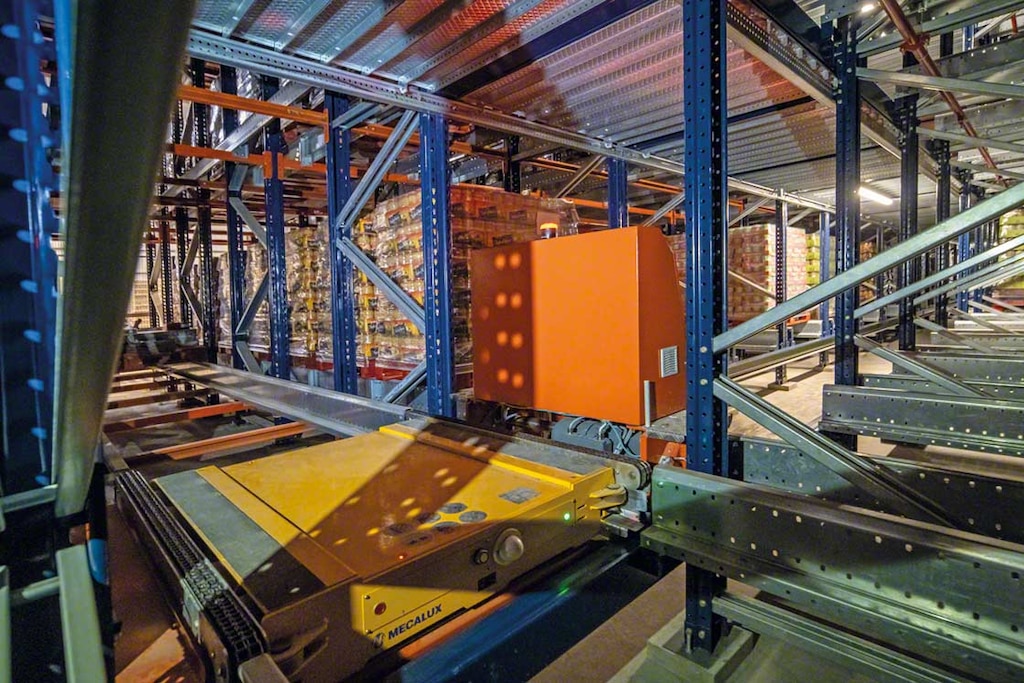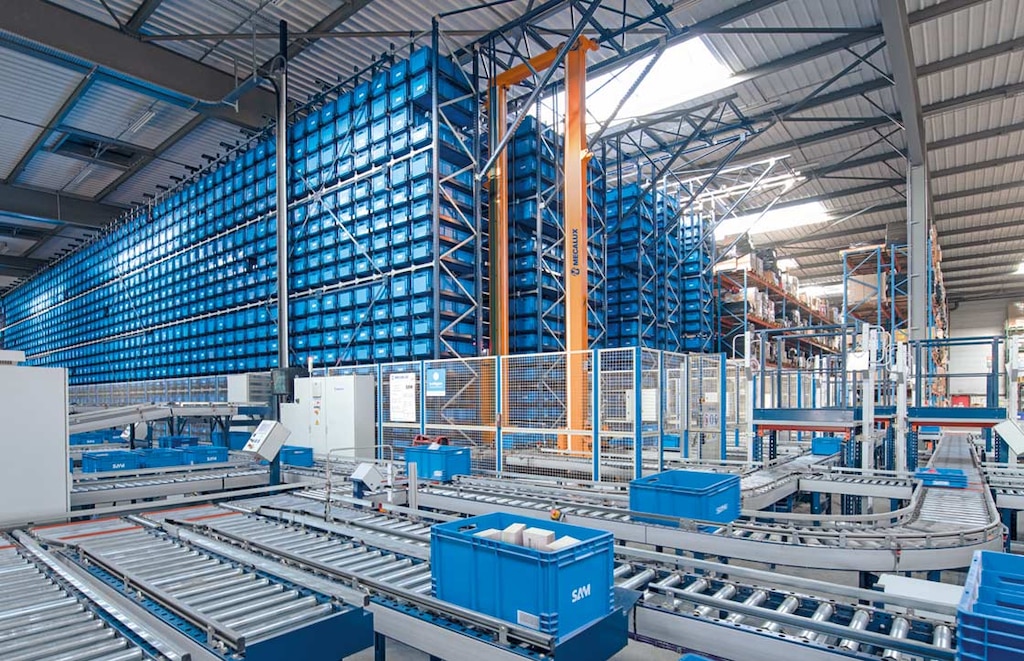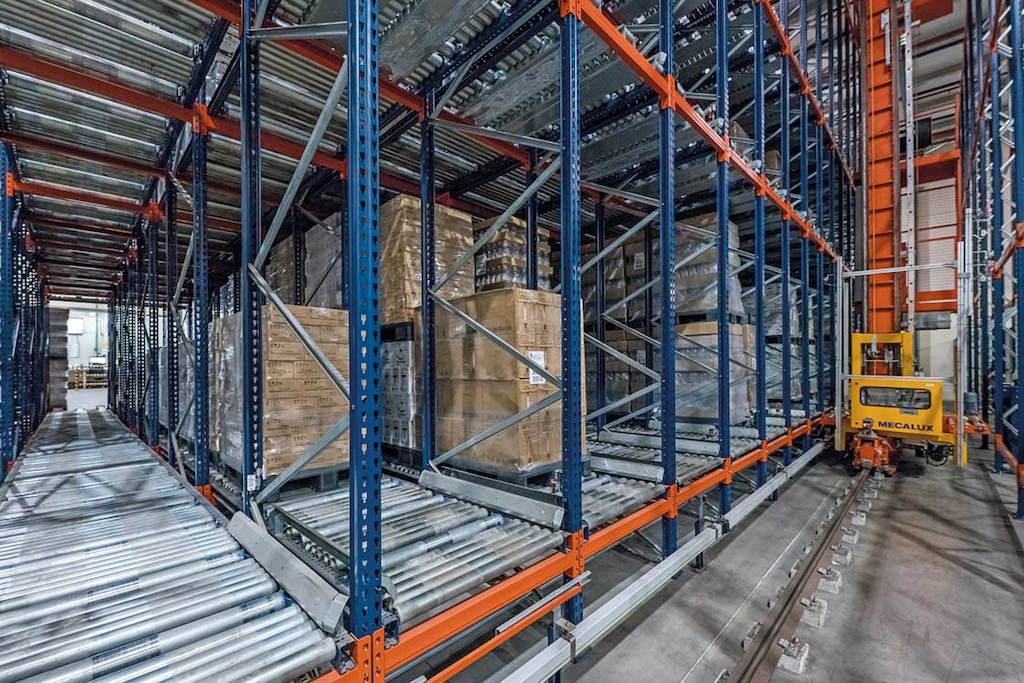
Automated storage and retrieval systems: types and characteristics
Automated storage provides businesses with automated logistics processes, thanks to the installation of handling equipment such as stacker cranes, conveyors, and electrified monorails.
Against a backdrop in which Logistics 4.0 demands speedier logistics operations — in addition to fewer errors to reduce costs — automated storage and retrieval systems (AS/RS) have become the most effective solution for remaining competitive.
In this post, we analyze the various kinds of automated storage and retrieval systems on the market for boxes as well as pallets. We’ll examine their advantages and explain how to choose the right system for your needs.
Automated storage and retrieval systems: direct access or compact storage?
As opposed to manual solutions, automated storage and retrieval systems are characterized by the use of robotics when performing the various logistics operations: storage, dispatch, transportation, and so on.
There are several types of automated storage and retrieval systems (for boxes and pallets), and each of them can be classified in one of two categories based on whether it offers direct access (single-deep) or high-density (compact) storage (double-deep or more).
Automated storage with direct access provides full accessibility to the goods, streamlining storage and picking tasks. Automated compact storage, meanwhile, accommodates a larger number of products by optimizing warehouse space.

So, how do you choose between a system with direct access or compact storage? There are a number of factors to consider, for example: number of SKUs managed, quantity of units of each one, available space, required turnover rates and movement flows, etc.
Automated storage and retrieval system types
According to the unit load handled and the kind of racking used, we can distinguish between the following automated storage and retrieval systems.
For pallets:
- Automated storage for pallets with stacker cranes. This is probably the most commonly employed automated storage and retrieval system for pallets. It can be implemented with single- and double-deep selective pallet racks and pallet flow racks. To do so, a stacker crane for pallets is installed in each aisle and is charged with inserting and removing the pallets from their locations. There are different varieties of stacker cranes on the market, with differing sizes and features.
- Storage with the automated Pallet Shuttle. In the fully automated version of the Pallet Shuttle system, an autonomous shuttle enters the storage channels and places each of the pallets in the deepest position of the high-density racks. This system increases storage capacity as well as agility. There are two ways to place the Pallet Shuttle on the racking: by means of stacker cranes or transfer cars. The choice depends on the number of entry and exit movements, the number of SKUs, and the quantity of pallets per SKU or batch.
The Cistér warehouse in Alcobaça, Portugal, uses the Pallet Shuttle with transfer cars.
For boxes:
- Automated storage for boxes with miniload stacker crane. The most widespread automated storage and retrieval system for boxes consists of racks specifically designed to store boxes, with a miniload stacker crane set up in each aisle and tasked with inserting and removing products into and from their locations automatically. The front of the warehouse is outfitted with pick stations where the goods are brought to the operators automatically via a conveyor, in line with the product-to-person principle.
- Automated storage for boxes with the Shuttle System. This solution uses a system of transfer cars as opposed to the miniload stacker crane in the case above. As with the miniload configuration, the Shuttle System is also complemented by one or more pick stations where operators receive and manage the boxes.
It’s important to note that all these systems can coexist perfectly under one roof. Additionally, the automated storage and retrieval systems can integrate a wide variety of automated elements, for instance: conveyors, lifts, transfer cars, electrified monorails, etc.

Advantages of automated storage
Implementing an automated storage and retrieval system brings numerous logistics benefits, namely:
- Boosted productivity. The handling equipment can work 24/7, enabling continuous, uninterrupted goods flows in and out of the warehouse.
- Operator and goods safety. Automated storage saves operators from spending their time on labor-intensive, non-ergonomic tasks. At the same time, automated goods handling keeps the merchandise in proper condition, free from impact and accidents.
- Stock control. The warehouse management system (WMS), responsible for identifying and controlling stock at all times to provide real-time inventory, can be integrated with any automated storage and retrieval system. This ensures highly efficient stock management and full product traceability.
- Cost reductions. Automation lets operators devote their time to tasks that add value. Likewise, maintenance expenses will go down, as there’s less wear and tear on the handling equipment.
- Cost-effectiveness of space. Storage space is much more productive with automated storage and retrieval systems. Occupying the minimum amount of space, they provide more storage space and throughput compared to standard manual solutions.
In short, automated storage and retrieval systems are your best bet for storing, preparing, and dispatching products quickly, safely, and without error.
Automated storage for competitiveness
Automation is indispensable for having a competitive supply chain. So, how do you choose the automated storage and retrieval system that best adapts to your logistics requirements?

Each automated storage and retrieval system offers a series of features and functions depending on the unit load, number of SKUs, volume of goods entries and exits, etc. With so many variables, it’s best to consult a specialist for advice. An expert will carefully analyze the characteristics of your company to come up with the best automation solution.
Interlake Mecalux has been manufacturing storage systems and automating companies from all sectors for over 50 years. Don’t hesitate to get in touch. We’ll help you find the automated storage and retrieval system that best meets your logistics needs.
